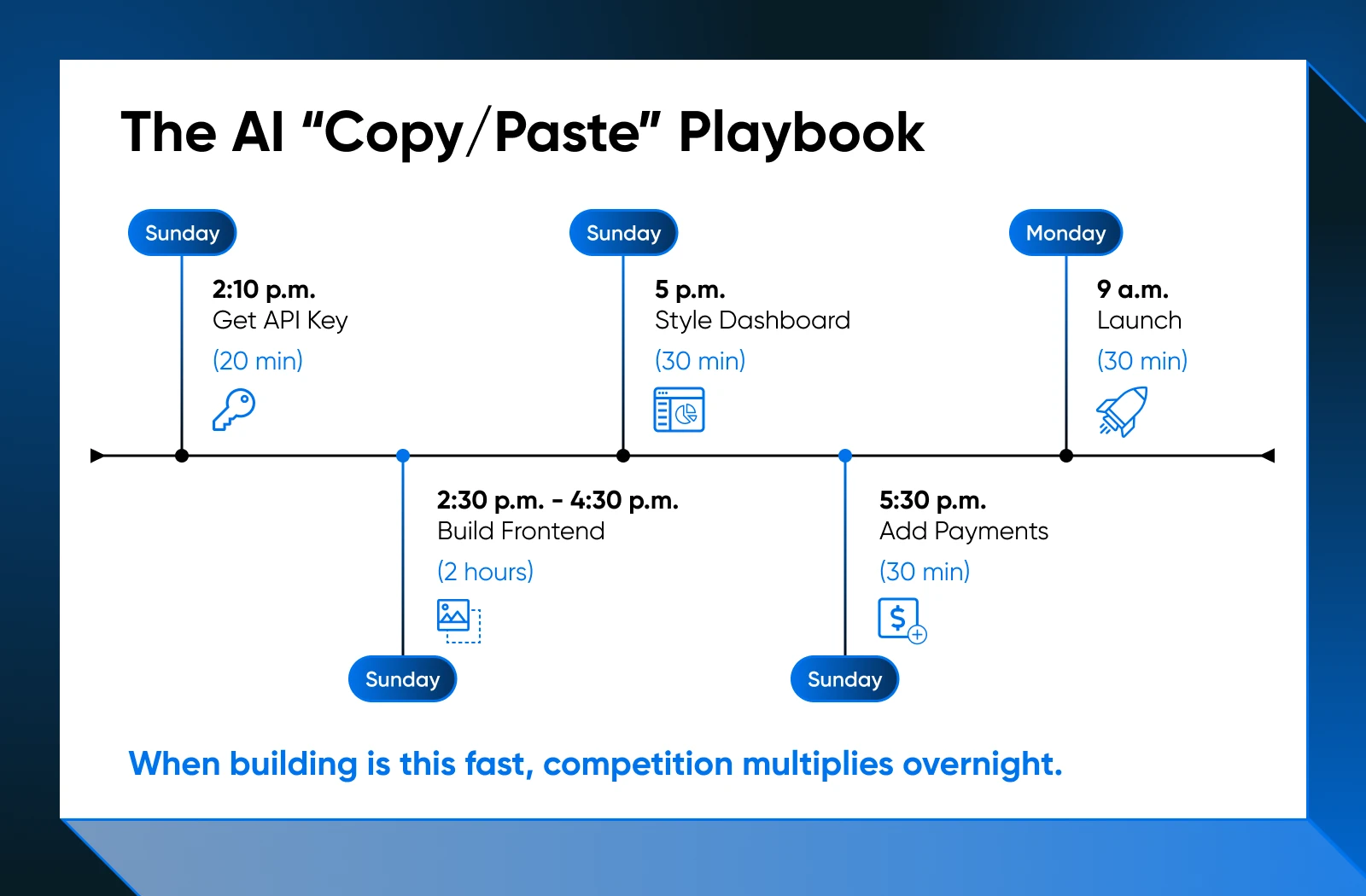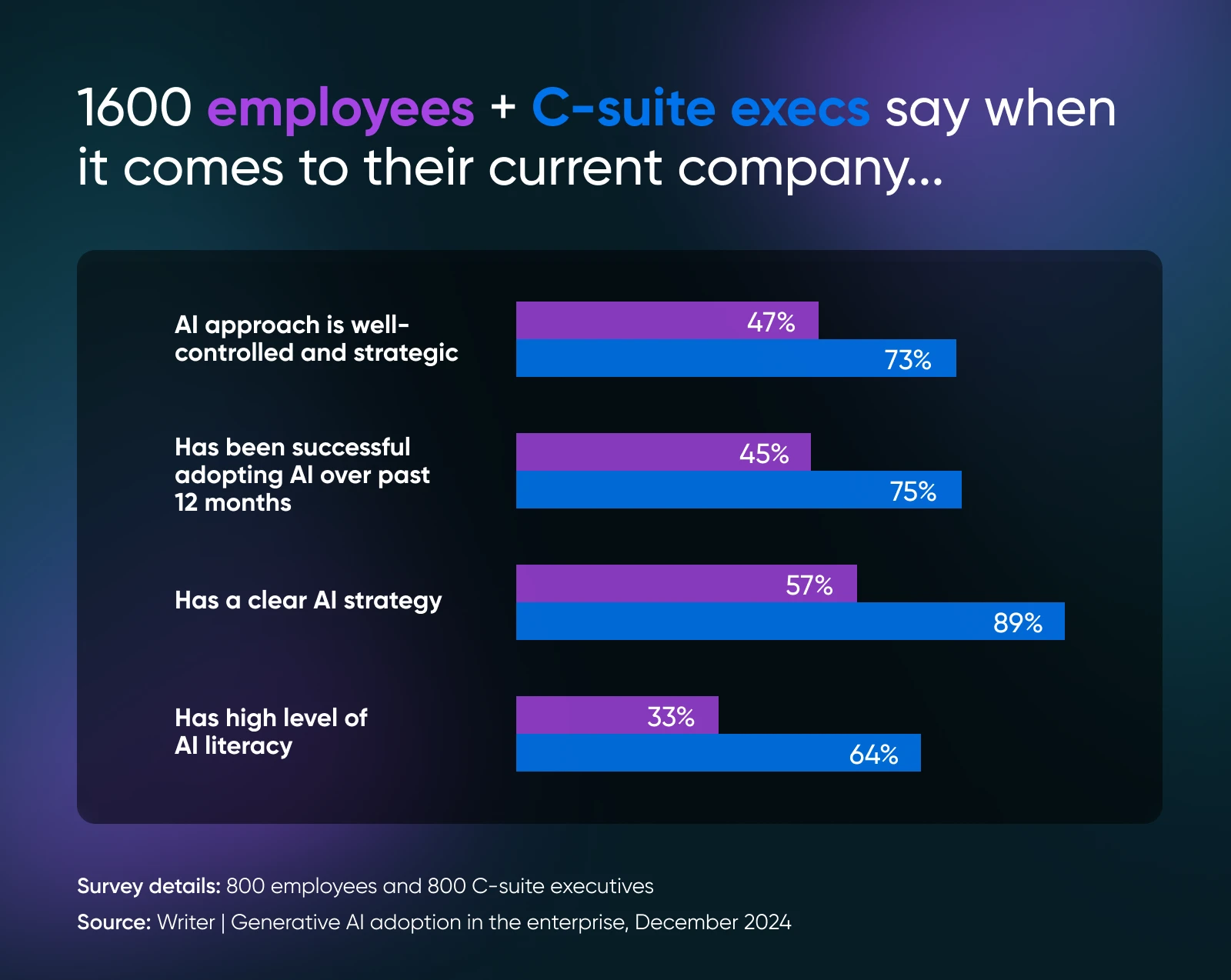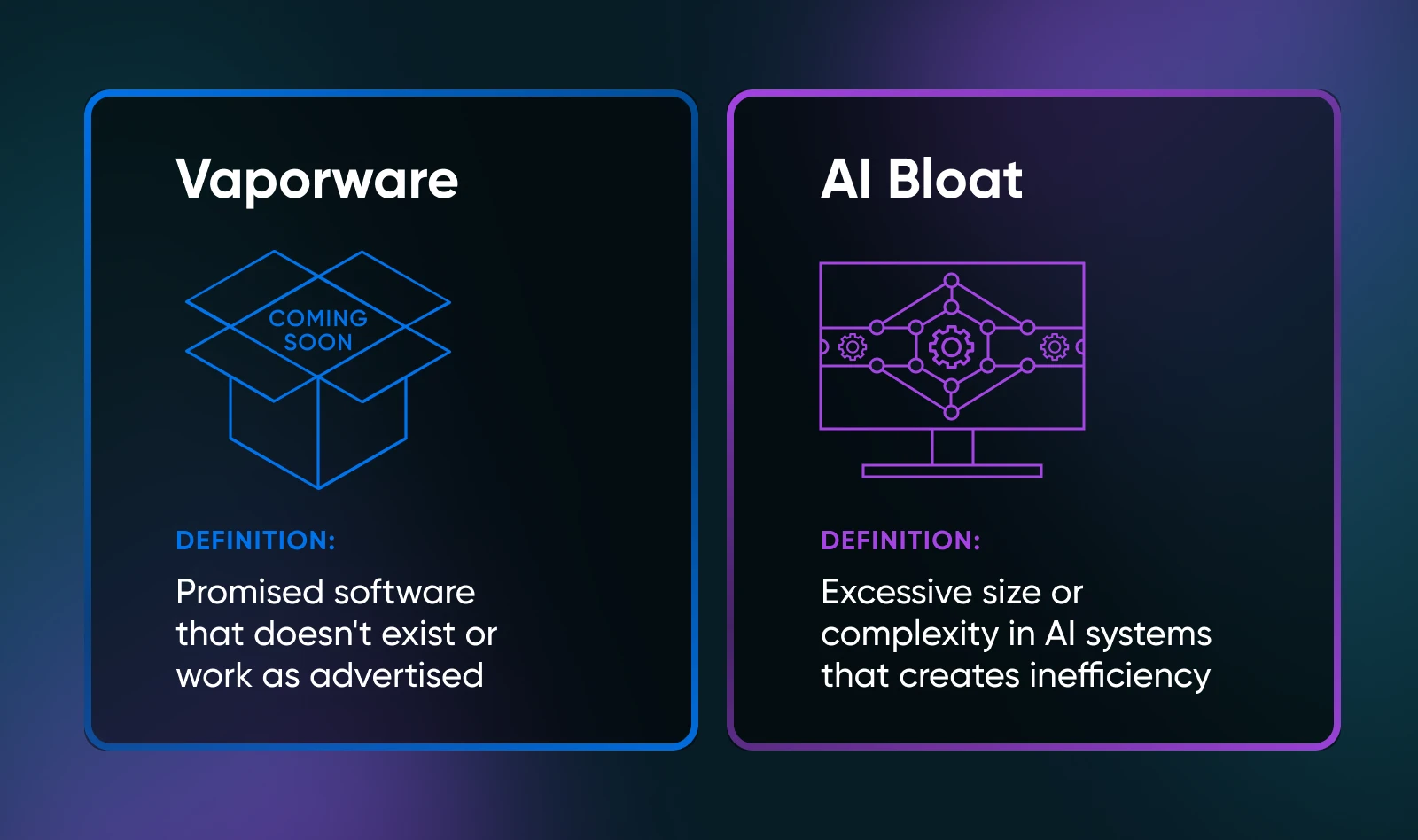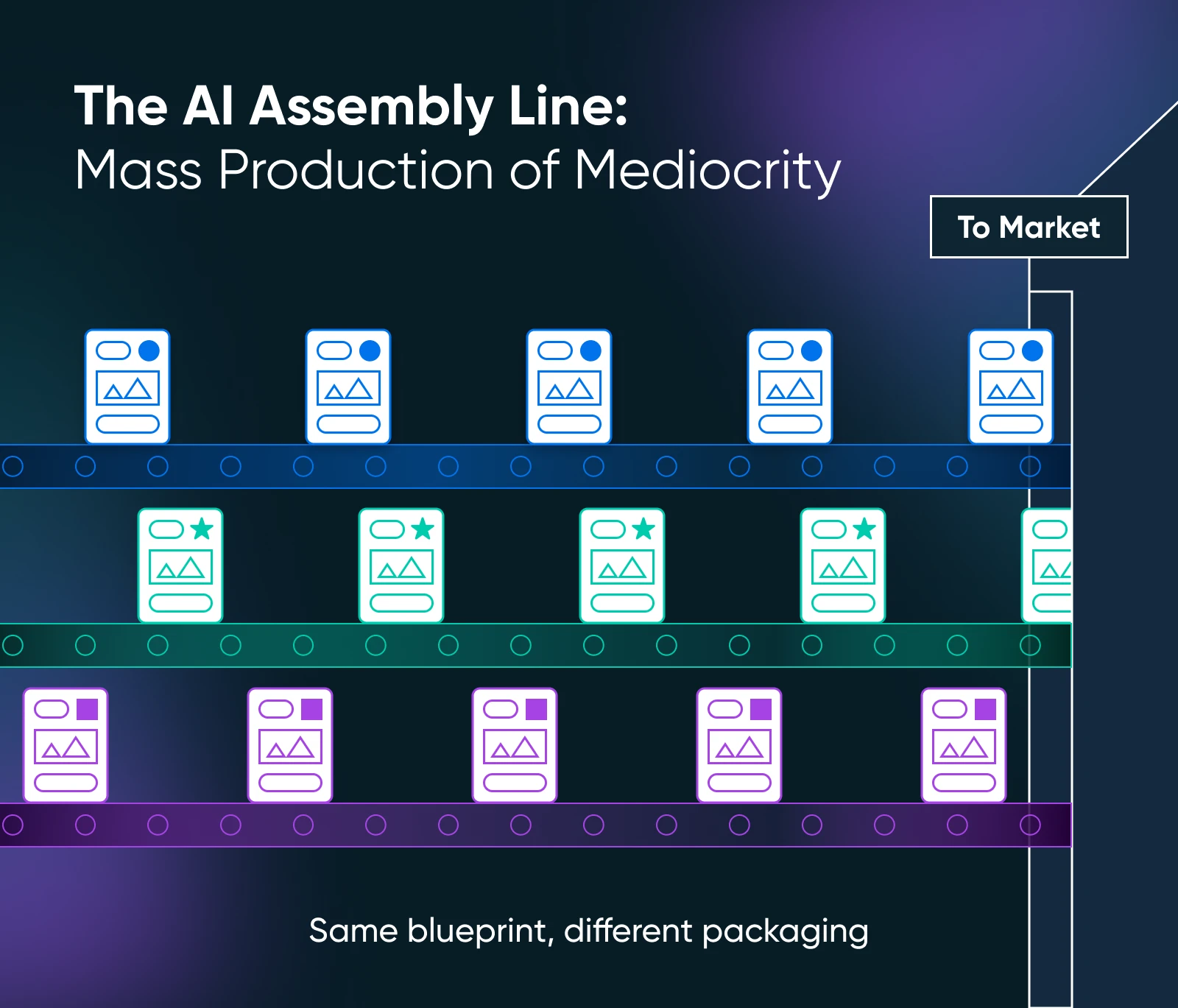The AI Gold Rush of Empty Promises

This year’s hottest SaaS pitch is starting to sound eerily familiar:
“Our AI-powered platform slashes busywork so you can focus on what really matters.”
Scroll Product Hunt on any random Tuesday and you’ll see that sentence — give or take a buzzword or three — pasted onto dozens of glossy landing pages. And investors are taking the bait. Venture capitalists injected $100 billion into AI-related startups in 2024 alone, and generative AI specialists nabbed $56 billion of that across just 885 deals.
If you’ve actually test-driven many of these tools, you know the dirty secret behind the polished elevator pitches: most are just shiny wrappers around the same public API, offering indistinguishable features at inflated subscription prices.
Instead of a productivity boom, we’re getting AI bloat: a swelling stack of “smart” apps that promise gold but deliver pyrite, the “fool’s gold” that tricked many a prospector looking for fortune.
So, as we all navigate the claim-staked valley of AI, we need to recognize many tools for what they are: copy-paste products. We also need to better understand how the race to mediocrity hurts real businesses, and, most importantly, how to pan for the few nuggets that are worth our time (and budget).
Ready to separate fool’s gold from the real deal? Whether you manage a five-product Shopify store or wrangle 500 seats of enterprise CRM, the sifting process is the same. Saddle up and let’s navigate this Wild West together.
It’s tempting to think the app store is full of near-identical AI products because founders misread the market. The truth is simpler: the system incentivizes sameness.
Low Barriers, Cheap Building Blocks
Just about anyone can spin up an AI resume writer in a weekend. Here’s all they have to do:
When the raw ingredients are that cheap and the recipe that repeatable, the number of look-alike dishes on the buffet is bound to explode. Plus, all the existing apps and tools that are adding AI features (whether necessary or not).

Capital Floodgates Are Wide Open
Investors see the low cost of entry and sprint in. Global venture funding for AI-related startups broke $100 billion in 2024, which was an 80% jump over 2023. Nearly a third of those dollars went to foundation-model companies, the same engines that weekend warriors stitch into their side projects. The result is a layered pyramid of money: big rounds for model builders at the base and thousands of point apps perched precariously on top.
The Corporate FOMO Flywheel
Now, on top of that, add buyers who are afraid of getting left behind. A December 2024 survey of 800 C-suite leaders found that 94% of them were dissatisfied with their current AI stack, but 59% admitted to “actively looking” for jobs with companies they considered “more innovative with generative AI.”

One possible way to interpret these survey results: executives know their AI tools are broadly disappointing, but they’re still willing to throw time, effort, and budget at them to avoid looking stuck in 2023.
At the other end of the spectrum, AI adoption among U.S. small businesses has jumped 41% in 2025, according to a new survey. The results also showed that small businesses often adopt AI tools without a formal vetting process at all, showing that SMBs are also feeling the AI hype, but with even fewer guardrails.
The Hidden Costs of AI Bloat
AI bloat is the swelling layer of look-alike, dashboard-heavy tools that inflate cost and complexity faster than they deliver outcome-changing results.
Founders and investors have started using this phrase, too. As Paddle founder Christian Owens told HSBC Innovation Banking, “Founders need to pay close attention to how customers are actually adopting and using AI products — the risk of ‘AI bloat’ is real.”
What Owens meant is that customers adopt overlapping features faster than they see real value. For example, your 17th “AI meeting assistant” that records Zoom, spits out a summary, and emails you a PDF you’ll never open.
It’s not vaporware; it works —just not in a way that changes your Tuesday.

But AI bloat comes with hidden costs, and not just when the bill arrives for the subscriptions for all these tools. Here’s how it chips away at time, money, and organizational trust:
- Time: Digital workers now switch between apps nearly 1,200 times every day, losing about five workweeks a year just re-orienting themselves amid near-constant context switching. Every new “smart” widget adds yet another login screen, onboarding video, and browser tab. Multiply that by an entire team and the promise of “instant productivity” just becomes more busywork.
- Money: License waste is skyrocketing. Zylo’s 2025 SaaS Management Index pegs average annual spend at $49 million for the mid-enterprise, with 275 apps in play (and spend now rising faster than app count). Separate research shows that half of businesses waste more than 10% of their software budget, and the average company flushes about $18 million a year on unused SaaS licenses.
- Trust: A Boston Consulting Group survey found that 74% of companies still struggle to turn AI pilots into scaled, value-generating programs. When executives watch slick demos but see no follow through, confidence plummets, and internal champions lose political capital. That erodes the very support you’ll need for genuinely valuable innovations later on.
The Race To Mediocrity
Why is this all so problematic?
Well, imagine 10,000 startups mining the same vein of ore. Quality doesn’t climb; it converges. That’s exactly what’s happening with AI-first SaaS, and the consequences are already showing up in both codebases and creativity.
Clone-of-a-Clone Syndrome
Take a quick scroll through Product Hunt. Does it seem like a lot of the launches are “[Insert-Your-Niche-Here]GPT”?
The Shopify App Store now lists more than 3,700 results when you search for “AI product description generator.” Many of them admit in the name or description that they’re built on a ChatGPT API, making who knows how many of them effectively the exact same app.
That isn’t just anecdotal. Crunchbase data for the 885 generative AI deals that closed in 2024 shows many tools with overlapping roadmaps. Even Forbes Tech Council has warned that normalizing “good enough” AI actively conditions customers to accept mediocre results.
We can all work on combatting this by getting better at spotting it in the wild: look for similar pricing pages, identical template libraries, and features that ship within days of each other because everyone’s pulling from the same open-source repo.

Creativity on Autopilot
The sameness isn’t limited to product design. It also bleeds into what users create using AI tools.
There are many examples of this, with more emerging all the time as AI tools become more prevalent and widely used.
- An MIT study of students’ EEGs showed that participants who drafted essays with ChatGPT had the lowest brain engagement and originality scores of any group studied.
- A Cornell CHI 2025 paper posits that AI suggestions “homogenize writing toward Western styles and diminish cultural nuance.”
- A recent TIME essay claims that AI “thrives when our demand for mediocrity is high” and nudges culture toward a lowest common denominator.
When the tooling itself pulls everyone toward the middle, originality becomes a scarce — and therefore more valuable — commodity. How that will play out remains to be seen, but it’s not looking good.
Shiny UI, Shallow Core
So why do we still buy in? Because humans are naturally attracted to shiny things, and the gloss is terrific.
A graphic-heavy hero video can convince us that a product is deeply integrated. An onboarding wizard can mask that the underlying logic is a single prompt. Weekly roadmap tweets can promise depth that simply never materializes.
Developers know these tricks. They know design is cheaper than pioneering new models or building messy integrations. So the budget tilts toward polish, not substance. And when everything looks fine on the surface, problems stay hidden (ish), but each underperforming tool makes stakeholders less willing to risk anything truly bold later.
Spotting (and Avoiding) AI Bloat: A Practical Checklist
What can you do to combat AI bloat and mediocre tools?
Next time you’re considering an AI tool, pull up this checklist. Especially if a tool or demo seems too good to be true, run it through the filters below — most AI tools that are all (or even mostly) hype will stumble by step 2 or 3, which means you can avoid them and save time and money.
The few tools that do pass are the real gold nuggets that are worth the investment.
Pro-Utility, Not Anti-AI
While we’re firmly against the flood of gimmicky, “AI-for-AI’s-sake” tools, let’s be clear: we are not waving torches and pitchforks at every robot we see.
We happily adopt new tech when it actually clears the checklist above. Exhibit A: Liftoff AI Website Builder.
For many small business owners, the biggest hurdle isn’t hosting. It’s design paralysis. So we asked: Can AI help eliminate first draft dread without locking people into a walled garden?
The Liftoff AI Website Builder:
Liftoff isn’t the only tool that meets our utility bar, but it’s a concrete proof-of-concept: AI can be transformative when it erases friction while respecting ownership and open standards.
If the next seemingly shiny product you test can’t match that ethos, you’ve got your answer: it’s fool’s gold.
The AI gold rush isn’t slowing down; the pitches are just getting louder. Some of what’s mined will actually be priceless, but it’s up to all of us to be able to tell real gold from the fake stuff.
Stay curious, stay skeptical, and keep your tech stack lean enough to sprint when the real breakthroughs arrive.



